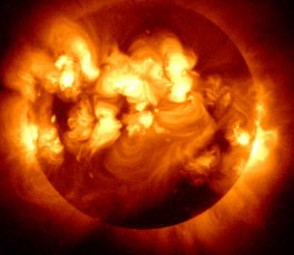By Joshua McGee, Center for Technology and National Security Policy
“Businesses care more about protecting their public image during an intrusive cyber incident than avoiding the loss of the intellectual property itself.” This was the comment by a panelist at a July 18th Bipartisan Policy Center event. His experiences with companies in Silicon Valley was that they seemed more concerned with headline-grabbing cyber incidents by hacktivists than with the discreet loss of intellectual property[1] that is said to cost the U.S. economy billions of dollars every year.[2]
Why might a private company have these priorities? One would imagine that the loss of intellectual property is something that a company would take seriously, just as seriously as protecting their public image. Recent publicized cyber intrusions show that many companies have lax security protecting vital intellectual property and consumer data.[3] It seems as if current free market forces are not directing companies to implement up-to-date cybersecurity strategies. Instead, these forces may be simply directing companies to create public relations contingency plans to reassure the public and shareholders after-the-fact? Ultimately, intellectual property is important to national security, and the resiliency of the United State’s high-tech, information and services-based economy. The following is a thought experiment in order to discuss and explore a few of the conundrums and issues that surround the loss of intellectual property in the private sector via cyber intrusions, the incentives for companies to prevent and react to these cyber intrusions, and how the government may play a role in preventing the loss of vital intellectual information held by the private sector.
For the most part, detected private sector[4] cyber intrusions can be placed in two categories: cyber intrusions that are publicly known, and those that are not. [5] In each of these situations, there are different company assets at stake:
- Publicly Known Breach – Loss of intellectual property (content) and bad PR (thus tarnishing the corporate brand and consumer confidence).
- Undisclosed Breach – Loss of intellectual property (content)
In both situations, content is being stolen, but the difference is that the corporate brand of the company is severely jeopardized with a “headline-grabbing event.” Recent studies show that corporate executives are extremely protective of their corporate brands, and that many times, a corporate brand may be more important than the intellectual property that they produce. [6] For this reason, there is a lot at stake when a company is a victim of a cyber intrusion conducted by groups like Anonymous or LulzSec, who purposely publicize such intrusions.[7] This fear of a tarnished brand thus could lead companies to prioritize public relations campaigns and not necessarily focus on the cause of these intrusions (both public and undisclosed): poor security. It is also difficult for companies to quantify losses associated with the disclosure of intellectual property and consumer data. This further complicates a company’s cost benefit analysis on whether it should invest in increased security or public damage control.
While a tarnished brand could greatly affect the company’s profits, the stealing of intellectual property and consumer data is not only a concern for the company, but also for national security, particularly when it involves government contractors. Such loss of intellectual property also affects the overall resiliency of the U.S. economy (which is largely based on innovation in high-technology, information and services). As discussed above, it seems as if companies may not be properly incentivized to protect themselves from cyber intrusions, but are more prone to address the public relations fallout that arise from a small number of intrusions that become publically known.
Should the government create the incentives for companies to make it their first priority to secure networks rather than engage in public relations campaigns? There is much at stake for the (security and economic) well-being of the U.S. Such legislation may include cybersecurity requirements for industries critical to national security or create a safe space for the private sector and government to collaborate on information sharing and best practices for cybersecurity. Many companies are also hesitant to fully disclose their cybersecurity intrusions because they are unsure whether or not they will be held legally and financially liable for lost information. Regardless, it is important to understand this problem as an issue of incentives that current government legislation and the free market provide to private companies. Through such a lens, stakeholders can better discuss the issues at hand.
[1] Bipartisan Policy Center, “Improving Cybersecurity Information Sharing,” Washington DC, July 18, 2012.
[3] http://www.ibtimes.com/articles/141872/20110505/sony-had-outdated-security-software-no-firewall.htm
[4] For the purposes of this article, “private sector” excludes owners of critical infrastructure, whose situation is unique compared to other businesses.
[5] Private disclosure to the government is another possibility, but the legal ramifications of a private company admitting to a security breach are unclear, and there are currently no known legal benefits for private companies to voluntarily disclose such information to the government.
[6] http://www.iwu.edu/economics/PPE17/lewis.pdf – “The Coca-Cola Brand is far more valuable than the ingredients that go into a can of Coca-Cola” (p. 47)



You must be logged in to post a comment.